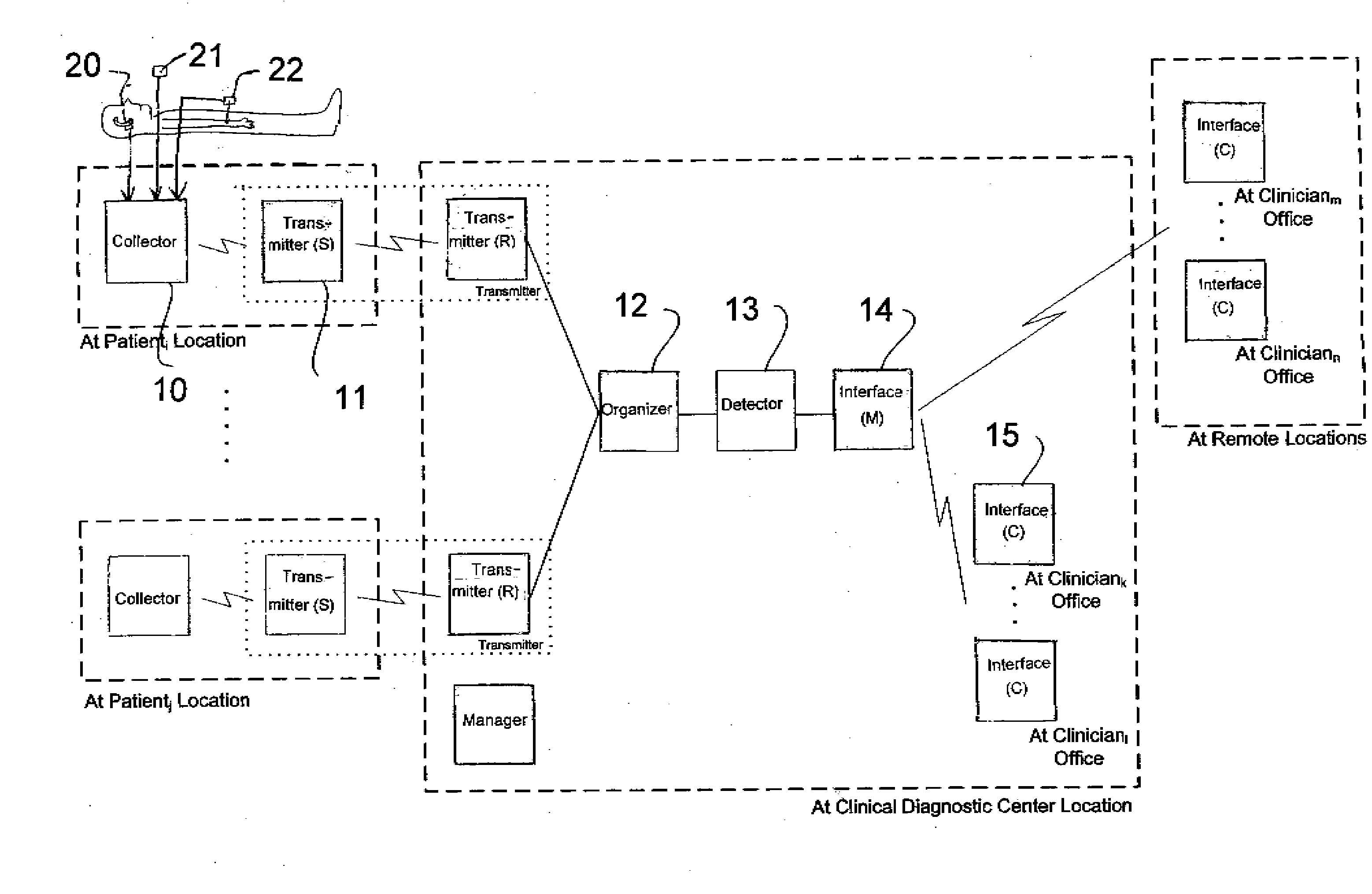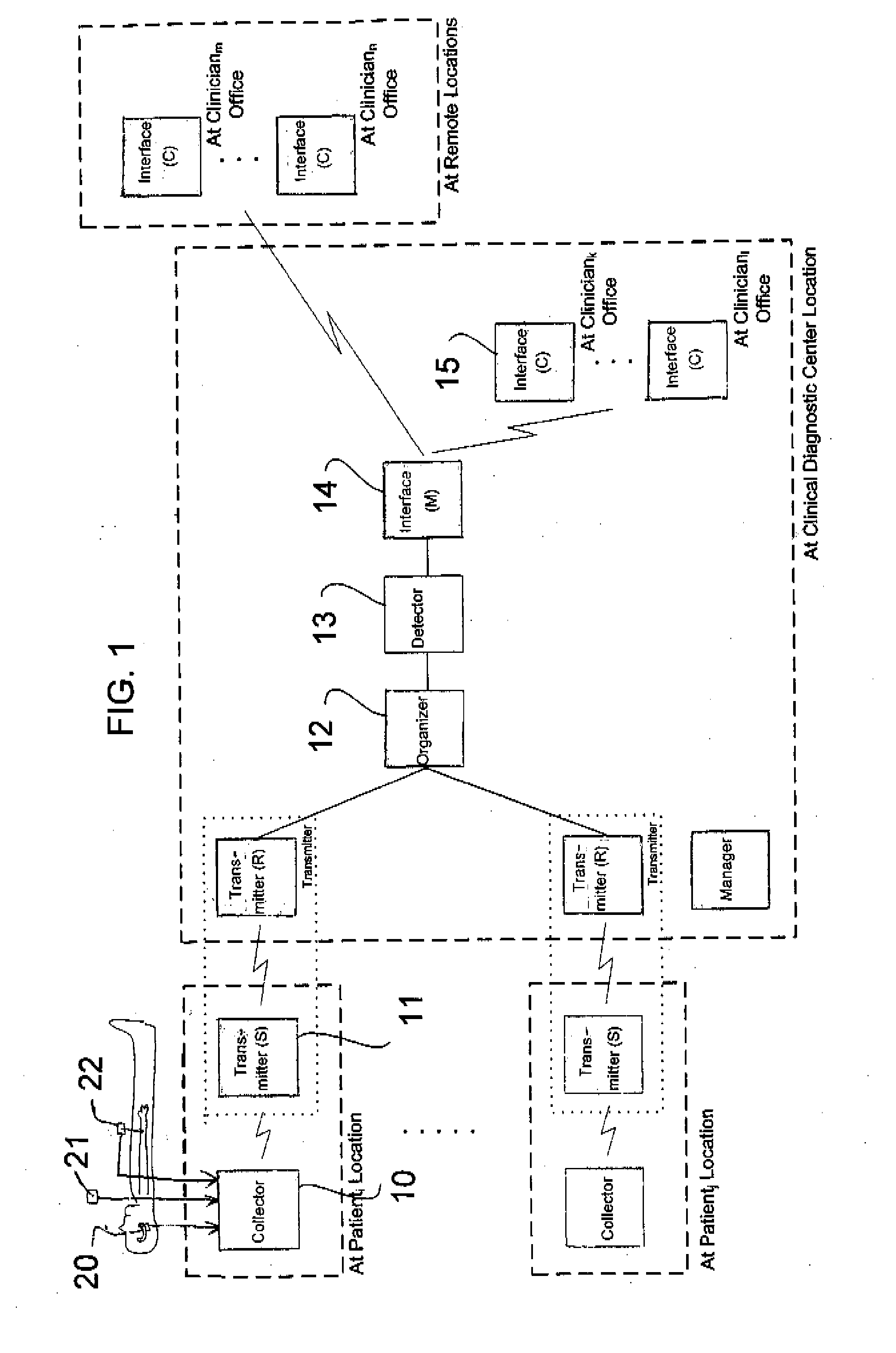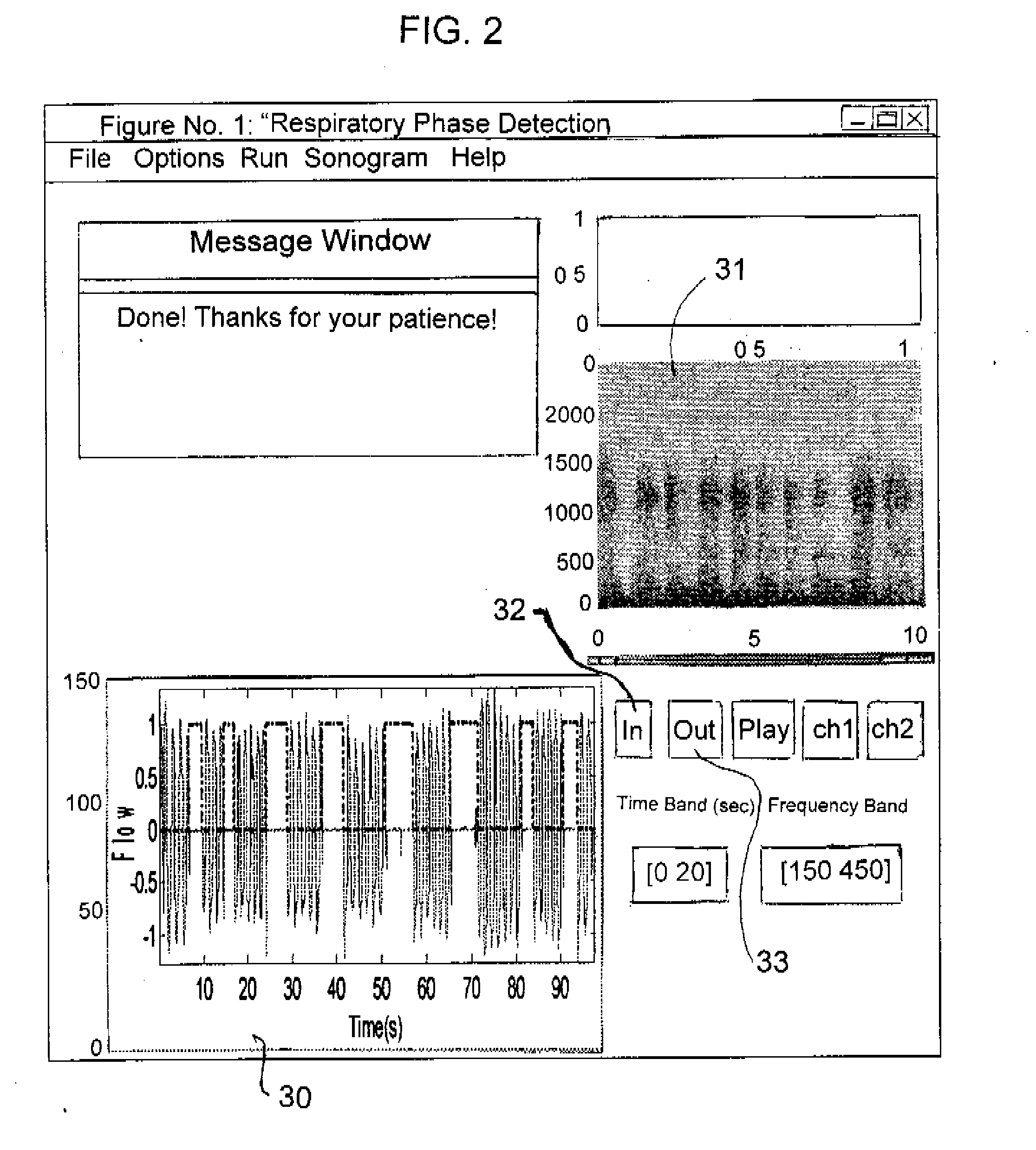Breathing sound analysis for estimation of airlow rate
a technology of airlow rate and breathing sound, which is applied in the field of breathing sound analysis for estimation of airlow rate, can solve the problems of inaccurate measurement of airflow, application of these techniques, and the inability of devices to be used during swallowing assessment, so as to effectively cancel the effect of heart sounds
- Summary
- Abstract
- Description
- Claims
- Application Information
AI Technical Summary
Benefits of technology
Problems solved by technology
Method used
Image
Examples
example 1
[0141]Eight healthy subjects (3 males) aged 33.1±6.6 years with body mass index of 23.3±3.5 participated in this study. Tracheal sound was recorded using Siemens accelerometer (EMT25C) placed over supra-sternal notch using double adhesive tapes. Respiratory flow signal was measured by a mouth piece pneumotachograph (Fleisch No. 3) connected to a differential pressure transducer (Validyne, Northridge, Calif.). The subjects were instructed to breathe at very shallow flow rates with different periods of breath hold (2, 4, 6 sec) to simulate apnea. Tracheal sound and flow signals were recorded and digitized simultaneously at a 10240 Hz sampling rate.
[0142]Among several features of tracheal sound such as the sound's mean amplitude, average power and entropy used for flow estimation, entropy and the range of signal have been shown to be the best features following flow variation. Therefore, in this study tracheal sounds entropy was used to detect apnea (breath hold in th...
example 2
[0146]In this study 10 healthy subjects of the previous participated. Subjects were in two age groups: 5 adults (all female) 29±8 years old and 5 children (3 female) 9.6±1.7 years old. Respiratory sounds were recorded using Siemens accelerometers (EMT25C) placed over supra-sternal notch and the upper right lobe lung. Respiratory flow was measured by a pneumotachograph (Fleisch No. 3) connected to a differential pressure transducer (Validyne, Northridge, Calif.). Subjects were instructed to breathe at 5 different flow rates with 5 breaths at each target flow followed by a 10s of breath hold at the end of experiment. In this study the shallow (27 ml / s / kg) target flow rates were investigated. Tracheal sound signals were used for flow estimation while the lung sound signal in correspondence with tracheal sound signals were used for respiratory phase detection. The onsets of breaths were detected by running a threshold on the average power of the tracheal sounds and detecting the valleys...
PUM
 Login to View More
Login to View More Abstract
Description
Claims
Application Information
 Login to View More
Login to View More - R&D
- Intellectual Property
- Life Sciences
- Materials
- Tech Scout
- Unparalleled Data Quality
- Higher Quality Content
- 60% Fewer Hallucinations
Browse by: Latest US Patents, China's latest patents, Technical Efficacy Thesaurus, Application Domain, Technology Topic, Popular Technical Reports.
© 2025 PatSnap. All rights reserved.Legal|Privacy policy|Modern Slavery Act Transparency Statement|Sitemap|About US| Contact US: help@patsnap.com



